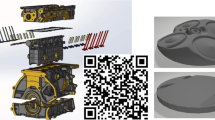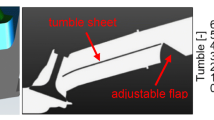Abstract
This paper focuses on the mechanisms of combustion noise during the accelerating operation of multi-cylinder diesel engines using testing technology for the transient conditions of IC engines. Based on impact factors, such as the gas dynamic load and cylinder pressure oscillations, tests and analysis of the combustion noise during transient and steady-state conditions for different loads are made on four-cylinder naturally aspirated engines, turbocharged engines, EGR-introduced engines, and high pressure common rail engines. The laws of combustion noise difference for the same engine speed and load are researched during transient and steady-state conditions. It is found that during transient conditions, the maximum pressure rise rate and the high frequency oscillation amplitude of the cylinder pressure are all higher than those observed during steadystate conditions for the same engine speed and load. With their joint action, the combustion noise during transient conditions is greater than that during steady-state conditions. Turbocharging is useful in reducing the combustion noise during transient conditions. Turbocharging has a better effect on the control over the combustion noise during transient conditions with a constant engine speed and an increasing torque than in conditions with a constant torque and an increasing engine speed. One of the main reasons for different control effects on the combustion noise is that turbocharging causes different wall temperatures inside combustion chambers. The introduction of the appropriate EGR is helpful in the reduction of the combustion noise during transient conditions. The key to the control of combustion noise with EGR during transient conditions is whether a real-time adjustment to the EGR rate can be made to achieve the optimization of the EGR rates for different transient conditions. By means of analyzing the differences in the combustion noise between the transient and steady-state conditions for different pilot injection controls, we obtain a strategy for controlling the combustion noise during transient conditions with a pilot injection. Compared with the steady-state conditions, a larger pilot injection quantity and a longer interval between the main injection and pilot injection should be selected for transient conditions, and this is verified through tests.
Similar content being viewed by others
Abbreviations
- BTDC:
-
before top dead centre
- CA:
-
crankshaft angle (deg)
- CPL:
-
cylinder pressure level
- DI:
-
direct injection
- dp/dφ:
-
pressure rise rate (Mpa/CA)
- EGR:
-
exhaust gas recycle
- f :
-
frequency (Hz)
- p :
-
pressure (Pa)
- p 0 :
-
reference acoustic pressure level (pa)
- RPM:
-
revolutions per minute (r/min)
- SPL:
-
sound pressure level (dB(A))
- T :
-
temperature (K)
- T :
-
torque (N·m)
Reference
Anderton, D. (1979). Relation between combustion system and noise. SAE Paper No. 790270.
Assanis, D. N., Filippi, Z. S., Fiveland, S. B. and Syrimis, M. (2000). A methodology for cycle-by-cycle transient heat release analysis in a turbocharged direct injection diesel engine. SAE Paper No. 2000-01-1185.
Carlucci, P., Ficarella, A. and Laforgia, D. (2001). Study of the influence of the injection parameters on combustion noise in a common-rail diesel engine using anova and neural networks. SAE Paper No. 2001-01-2011.
Crocker, M. J. and Hamilton, J. F. (1979). Modeling of diesel engine noise using coherence. SAE Paper No. 790362.
Dec, J. E. (2001). A computational study of the effects of low fuel loading and EGR on heat release rates and combustion limits of HCCI engines. SAE Paper No. 2002-01-1309.
Head, H. E. and Wake, J. D. (1980). Noise of diesel engines under transient conditions. SAE Paper No. 800404.
Hicking, R. (1983). Cavity resonance in engine combustion chambers and some applications. J. Acoustical Society of America 73,4, 1170–1178.
Hickling, R., Feldmaier, D. A. and Sung, S. H. (1979). Knock-induced cavity resonances in open chamber diesel engines. J. Acoustical Society of America 65,6, 1474–1479.
Payri, F., Broatch, A., Tormos, B. and Marant, V. (2005). New methodology for in-cylinder pressure analysis in direct injection diesel engines — Application to combustion noise. Measurement Science Technology 16,2, 540–547.
Pischinger, F. F., Schmillen, K. P. and Leipold, F. W. (1979). The naval method for measuring diesel combustion noise directly. SAE Paper No. 790267.
Priede, T. (1980). In search of origin of engine noise-An historical review. SAE Paper No. 800534.
Rakopoulos, C. D., Giakoumis, E. G., Hountalas, D. T. and Rakopoulos, D. C. (2004). The effect of various dynamic, thermodynamic and design parameters on the performance of a turbocharged diesel engine operating under transient load conditions. SAE Paper No. 2004-01-0926.
Russell, M. F. and Haworth, R. (1985). Combustion noise from high speed direct injection diesel engines. SAE Paper No. 850973.
Russell, M. F., Nicol, S. W. and Young, C. D. (1990). Modulation of injection rate to improve direct injection diesel engine noise. SAE Paper No. 900349.
Rust, A. and Thien, G. E. (1987). Effect of transient conditions on combustion noise of NA-DI-Diesel engines. SAE Paper No. 870989.
Schneider, M., Schmillen, K. and Pischinger, F. (1987). Regularities of cylinder pressure oscillation and their effects on the combustion process and noise. SAE Paper No. 872248 92.
Schubiger, R., Bertola, A. and Boulouchos, K. (2001). Influence of EGR on combustion and exhaust emissions of heavy duty DI-diesel engines equipped with commonrail injection systems. SAE Paper No. 2001-01-3497.
Selim, M. Y. E. (2003). A study of some combustion characteristics of dual-fuel engine using EGR. SAE Paper No. 2003-01-0766.
Su, G. and Wei, H. (2004). Analysis of high-frequency pressure oscillation by obtaining high-frequency component from combustion pressure of internal combustion engine. Chinese J. Mechanical Engineering 40,9, 6–9.
Su, G. and Wei, H. (2005). Experimental study on combustion noise in transient conditions of DI. SAE Paper No. 2005-01-2487.
Su, G. and Wei, H. (2007). Study of combustion noise mechanism under accelerating operation of a naturally aspirated diesel engine. Int. J. Vehicle Design Special Issue, 45,1–2, 33–46.
Watson, N. (1981). Transient performance simulation and analysis of turbocharged diesel engines. SAE Paper No. 810338.
Wei, H. and Su, G. (2004a). Study on high-frequency pressure oscillation of combustion pressure through wavelet analysis. J. Tianjin University 37,7, 620–624.
Wei, H. and Su, G. (2004b) Cylinder pressure and combustion noise of internal combustion engine. J. Combustion Science and Technology 10,1, 56–61
Wei, H. and Su, G. (2006). Study on the relation between aerodynamic load relevant factors and combustion noise of DI-diesel engine. Tractors and Farm Transport Vehicles 33,1, 37–40, 43.
Winterbone, D. E. (1986). ’Transient Performance’, in J. H. Horlock. and D. E. Winterbone (Edn), The Thermodynamics and Gas Dynamics of Internal Combustion Engines, II. Clarendon Press. Oxford.
Author information
Authors and Affiliations
Corresponding author
Rights and permissions
About this article
Cite this article
Wei, H., Li, Z., Liang, X. et al. Influence of the accelerating operation mechanism on the combustion noise in DI-diesel engines. Int.J Automot. Technol. 13, 373–388 (2012). https://doi.org/10.1007/s12239-012-0035-2
Received:
Revised:
Accepted:
Published:
Issue Date:
DOI: https://doi.org/10.1007/s12239-012-0035-2




